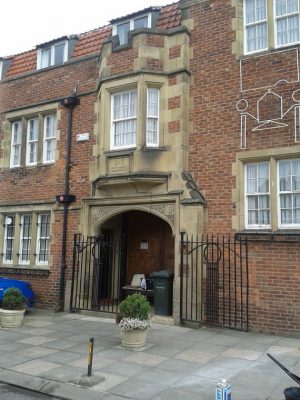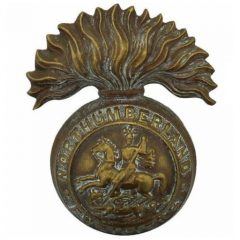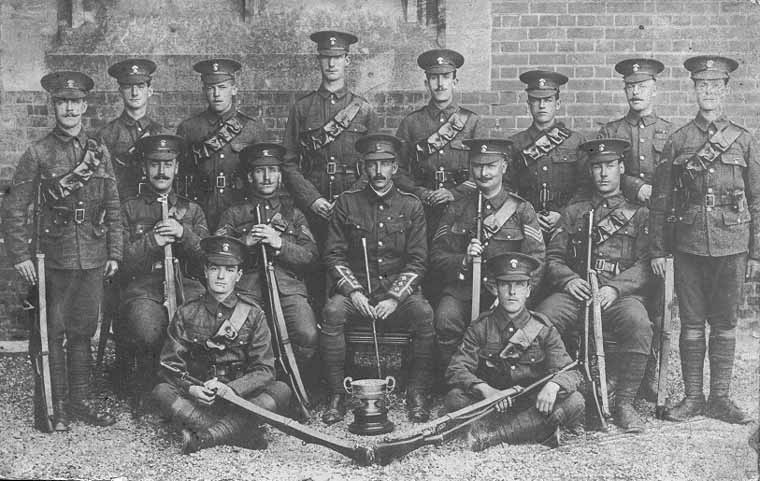
'Service' Battalion
'G' Coy
'G' Company (Newburn) notes:
HQ -
Coy transferred from 5th Bn - 31st Oct 1910
The 4th Bn adopted a four Coy system during January 1915. 'G' Coy amalgamating with 'B' Coy.
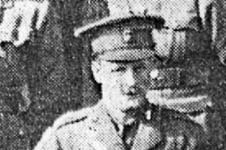
Officer Commanding: Lt Geraint Lindsey Hunting
Gerald was the grandson of Charles Hunting, a wealthy Victorian businessman who had made a fortune from the coal industry. Around 1870 he turned his attention to shipping and bought stock in several ship owning companies and started the first Hunting Company in 1874. A few years later, he bought his son, Charles Samuel Hunting (1855-1921), a pair of second-hand sailing ships as a 21st birthday present. By 1889 Charles Senior had entered the oil industry and Hunting and Son had around a dozen general cargo steamships which were supplemented by an order for its first oil tanker, the 5,000dwt Duffield, one of the first oil tankers ever to be built.
After his death, his second son (Charles Samuel) took control of the business and expanded the shipping activities. The family resided at 11 Akenside Terrace, Jesmond in 1881 , Deepdene House, Jesmond Dene in 1891 and Westminster, London in 1901. However, in 1911 the Huntings purchased Bog Hall Farm near the village of Slaley and built Slaley Hall on the site, in a style typical of sporting estates in northern England and Scotland at the time. Construction of Slaley Hall began in 1912. and it was completed in 1914. The hall remained with the Hunting family until the death of Charles Hunting, at which point it was bought by Major Priestman.
The Hunting shippimg fleet was pressed into military service during WW1 and was reduced to just four ships by the end of the war. Charles Samuel Hunting died in 1921 but his two sons Percy and Gerald Lindsay rebuilt and expanded the business. They chose to concentrate on the oil trade and ordered a series of new motor driven tankers. To consolidate the move, they decided to relocate the Hunting's HQ down to London, in 1925, and simultaneously to absorb the shipbroking business of E.A. Gibson. (Gibson, n.d.) Determined to rebuild the fleet, Percy as "governing partner" also diversified the business by taking the company into aircraft servicing and manufacturing, and some years later the ‘Hunting Clan’ airline business. With time the Hunting name became synonymous with a range of military and civil aircraft including the Jet Provost and in its nascent days the aircraft that would become one of Britain's most sucessful best export sellers, the BAC 1-11.
Gerald died in 1966, aged 75, was a successful amateur batsman for Northumberland before and after the First World War. In the Loretto XI he headed the batting averages in 1910 and 1911. (Wisden Almanac)
http://www.espncricinfo.com/wisdenalmanack/content/story/228443.html
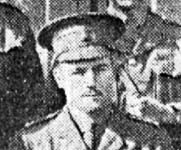
2nd Lt Robert Allen
Born 1890 and living in Bellingham (1901 Census).
Father a grocer, shopkeeper and county court bailiff.
He died in 1962
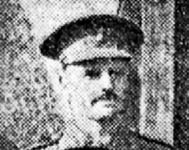
2nd Lt Norton Butler Napier Good
Assumed command of the Bn Machine Gun Section prior to going to the Front.
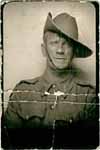
Col Sgt Luke Stuart
Luke had served with the Northumberland Fusiliers at the battle of Omdurman in 1898.
Sgt H Jarvis (Permanent Staff)
'Reserve' Battalion (2/4th)
'G' Coy
'G' Company notes:
The 2/4th battalion became part of the newly formed 188th Bde, 63rd Divn during January 1915. The 63rd Divn was tasked with home defence, but was disbanded in Jul 1916. The 2/4th joined the 217th Bde, 72nd Division, but continued with home defence duties. The 72nd Divn was broken up Jan - Apr 1918
Officer Commanding:
Capt.
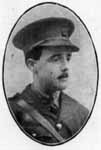
2nd Lt Thomas William Gregory
Thomas was the son of Elswick grocer William M Gregory (b.1866) (3&4 Studley Terrace, Elswick) mother Ann E Gregory (b.1865), daughter Mary E (b.1891), Violetta (b.1892), Thomas W (b.1895), James H (b.1900).
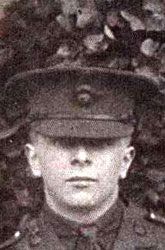
2nd Lt James Michael Jeslyn Spencer
James was the second son of Mr. and Mrs. Richard Elias Evans Spencer of Walbottle Hall, Newburn, Northumberland. James was born in Oct 1895 and educated at Alnmouth and Clifton College and was about to enter King's College, Cambridge, when war broke out. He enlisted as a gunner in the Northumberland Artillery, then obtained a commission in the Northumberland Fusiliers, receiving his second star in 1915. He transferred to the Royal Flying Corps in July 1916, and went to the Front in September. Flight - 14 Dec 1916 (www.flightglobal.com)
The Spencer family were early industrialists who changed the face of Newburn. The first John Spencer established a mill for the manufacture of files at the beginning of the 19th century. At the end of the century his son, also named John, was Managing Director of a huge industrial concern employing 1,500 workers. Steel plates, springs and other items were provided for the railway, shipping, armaments and mining industries all over the world. The large steel plates for the ship Mauretania were made in the Newburn factory. After the First World War demand for steel lessened and the factories were closed in 1926 and demolished in 1933. Much of the legacy of John Spencer can be discovered in Newburn Village, which is our next destination. ( www.petersen-stainless.co.uk )
Col Sgt
